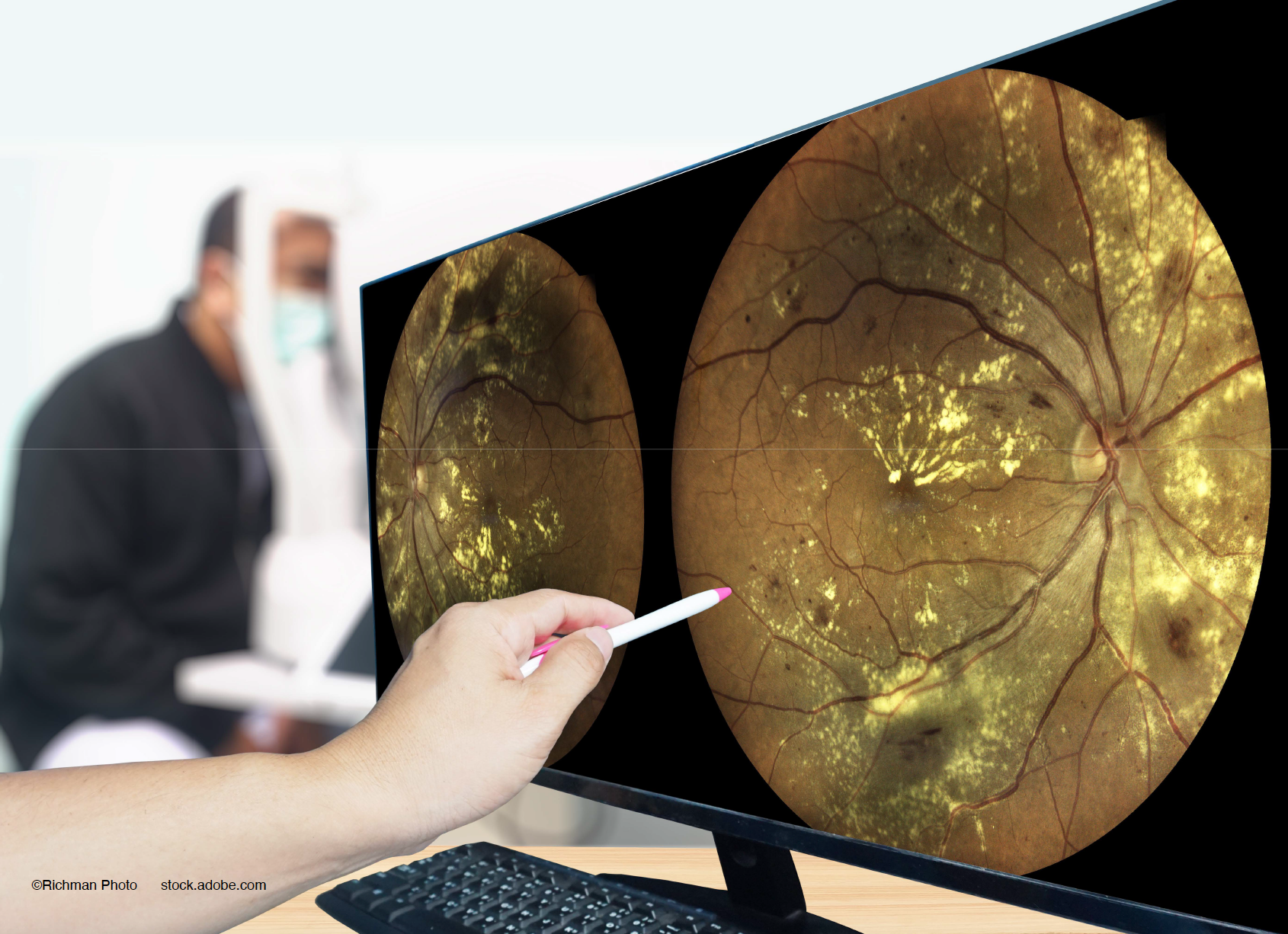Article
Risk factors for vision loss with untreated DME and good baseline BCVA
Author(s):
Study: Older age and eyes with severe nonproliferative diabetic retinopathy or proliferative diabetic retinopathy had a higher risk of a vision loss event.
Monitor patients with these risk factors closely so that prompt treatment can begin when vision loss occurs.

Older age and worse diabetic retinopathy are risk factors for vision loss among patients with untreated diabetic macula edema (DME) and good baseline best-corrected visual acuity (BCVA), according to first author Daniella Lent-Schochet, BS, from the Department of Ophthalmology and Vision Science, University of California Davis, Sacramento.
She and her colleagues conducted a retrospective cohort study1 of eyes with long-term untreated center-involving DME and a baseline VA of 20/25 or better evaluated between March 2007 and March 2018. The study goal was to identify clinical and anatomic factor-associated vision loss in eyes with treatment-naïve DME and good initial VA.
Fifty-six eyes of 48 patients with untreated DME and mean baseline BCVA of 0.05 ± 0.05 logarithm of the minimum angle of resolution (Snellen, 20/22) were followed for 5.1 ± 3.3 years on average. The median time to visual loss was 15 months.
“Older age (hazard ratio [HR] 1.04/year, p = 0.0195) and eyes with severe nonproliferative diabetic retinopathy (HR 3.0, p = 0.0353) or proliferative diabetic retinopathy (HR 7.7, p= 0.0008) had a higher risk of a vision loss event. No spectral-domain optical coherence tomography biomarkers were associated with vision loss except central subfield thickness (HR 0.98, p= 0.0470) and cyst diameter (HR 1.0, p = 0.0094),” the investigators reported.
They advised that such patients with these risk factors should be monitored closely for prompt treatment when vision loss occurs.
Reference
Lent-Schochet D, Lo T, Kieu-Yen L, et al. Lent-Schochet D, Lo T, Kieu-Yen L, et al. Natural history and predictors of vision loss in eyes with diabetic macular edema and good initial visual acuity. Retina. 2021;41:2132-9.
Newsletter
Don’t miss out—get Ophthalmology Times updates on the latest clinical advancements and expert interviews, straight to your inbox.




